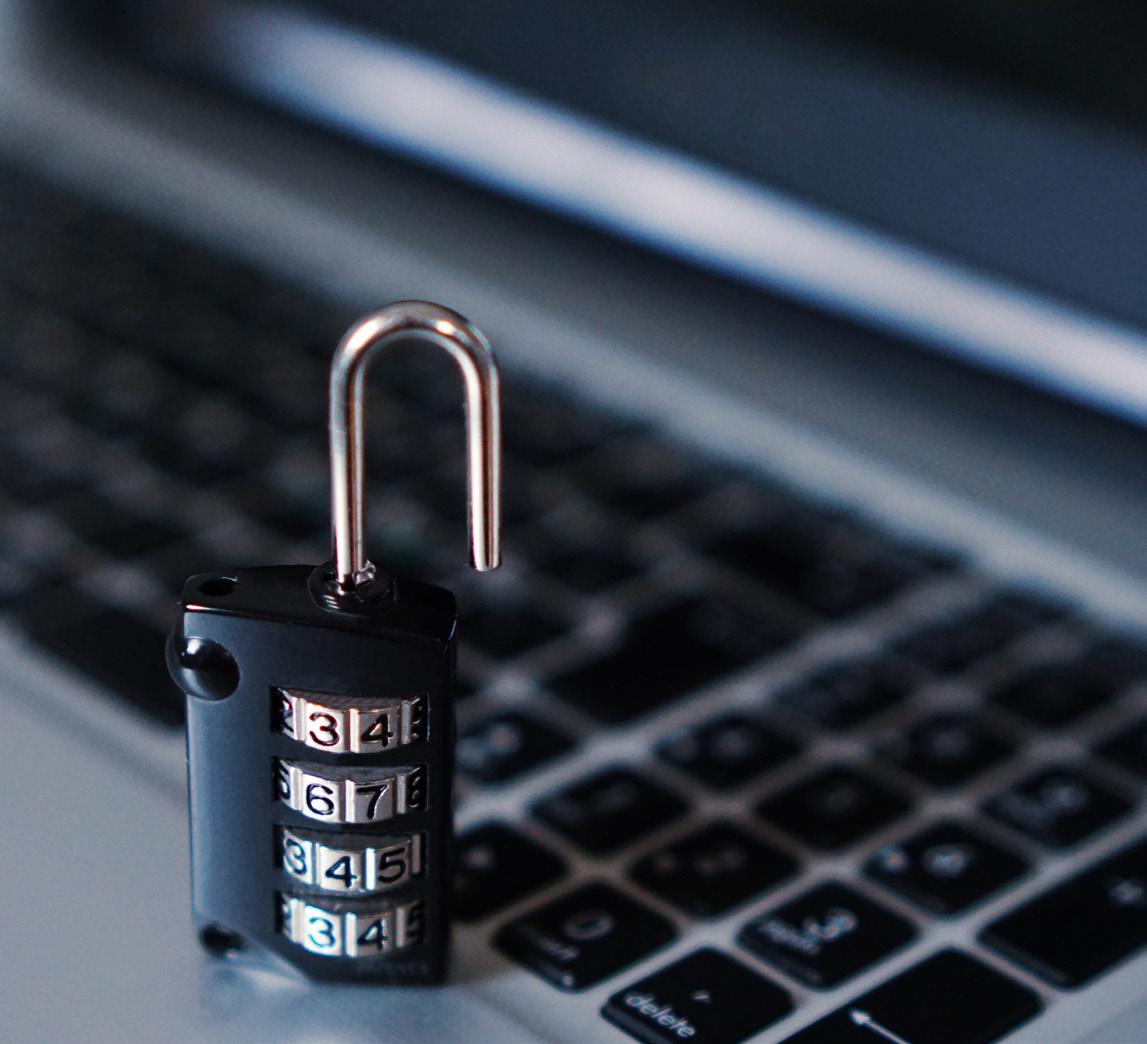
4 minute read
Financial institutions guide to cyber security
Cybersecurity concerns are growing overwhelmingly in all types and sizes of businesses. But one sector that has the most profound fears is the financial services sector, and for a good reason. In today’s modern world, almost all valuable information of any financial organization is stored electronically. Also, more systems and databases are used in the financial institutions as the world continues to exponentially employ the use of the internet and mobile technologies for data transmissions and the making of transactions. All these electronic activities in financial institutions make the risk of cyber-attack imminent.
Financial institutions have to go beyond protecting vital data such as customer records or any other confidential documents and face the more significant challenge of safeguarding their systems, networks, and financial assets under them. In case several institutions are attacked simultaneously, the blow on market confidence and the nation’s financial stability would be catastrophic.
Cybersecurity insinuations are so severe that in 2015, the US Director of National Intelligence ranked cybercrime as the top national threat saying that its risk is ”higher than that of terrorism, espionage, and weapons of mass destruction.” The dangers posed by cybercrimes against the financial services industry have raised concerns and is now on the spotlight of watchdogs globally.
Financial institutions have all the rights to be highly concerned about their cybersecurity. According to the 2015 Industry Drill-Down Report from Websense, the financial services sector faces cyber-attacks 300% more frequently than any other sector. In the first half of 2015 alone, the Identity Theft Resource Center counted at least 30 known breaches in the financial sector.
In the same year, business leaders have it upon themselves to prevent cyber-attacks. 2015 Travellers Business Risk Index states that 80% of leaders from the financial services sector cited prioritizing the fight to avoid cyber risks, above compliance, legal, and other economic concerns. Many of the leaders have taken measures to strengthen their cybersecurity position. However, the sector still faces the same challenge due to the speed of technological advancements and the continuously sophisticated nature of cyber-attacks.
What triggers cyber-attacks?
One of the primary triggers of cybersecurity threats to the financial services sector is the increased exposure to foreign intelligence entities and the propagation of digital data. This data poses a considerable threat to any financial institution once it lands on the hands of hacktivists influenced by political or social agendas or anyone seeking to cause systematic chaos in the financial markets.
Another possible factor that triggers cyberattacks is the existence of malicious and unwitting company insiders such as employees, contractors, suppliers, or even business partners who have the authority to access sensitive information or systems of a particular financial institution. A recent security survey on the financial services sector shows that almost half (46%) of security specialists cited that the most predominant cause of breaches is abuse or misuse of the institutions’ insiders.
Cyber threats feared most by financial institutions
The world of cyber-crime may be vast, but there are those threats that can bring severe damage to the financial services sector. They include:
Advanced Persistent Threats (APTs)- these are undetected, persistent computer hacking processes that give the hackers access to a high-value network of the organization. The threat features phishing of emails or using other tricks to fool employees into downloading malwares that give access to the hacker. Internal threats- any insider who has authorized access to the institution’s systems poses an irrevocable risk to the institution. The insiders may authorize the access intentionally or unintentionally, which could be a result of the increased use of personal devices at the workplace and the use of cloud-based storage. Account takeover- cybercriminals tend to hack their way into bank systems or credit cards, especially those that interface through the internet. Once the criminals are in, they have the power to carry out any transactions. Other threats include; third-party payment processor breaches, supply chain infiltration, and payment card skimming, among others.
How organizations can protect themselves from cyber-attacks
Despite the issue of cyber-attacks being so challenging, there are ways institutions can use to keep away intruders or at least sound alarm when there is a breach. One of the ways is through implementing basic security operations. The institutions should have a strong foundation of network hardware, software, and limited fault monitoring systems such as IPS, IDS, firewalls, and SIEM systems. The systems help to keep the firm protected from 80% of known threats.

Another way to prevent this is by introducing compliant security operations. This can be done by introducing specific steps and documentation practiced by a network operation center or a security operation center (SOC). The focus of this move is to deploy more quick detection of any intrusions and establish a reactive defense posture.
Organizations should also use sustainable security operations that align the organizational procedures and documentation with industry best practices or compliance standards. These facilities usually are dedicated to giving cybersecurity to the organization and responding to any form of threat.
Another way to do this is through the use of the most recent intelligence-driven defense. This defense is driven by organizational collaboration, intelligence, event analysis, and early threat detection. The defense can be used to strengthen the organization’s security posture with a predictive capability that enables the organization to respond to any developing threats before they are launched.
Works cited.
http://www.cutoday.info/content/ download/26039/218761/version/1/file/Lockheed +Martin+Guide+to+Cybersecurity.pdf










